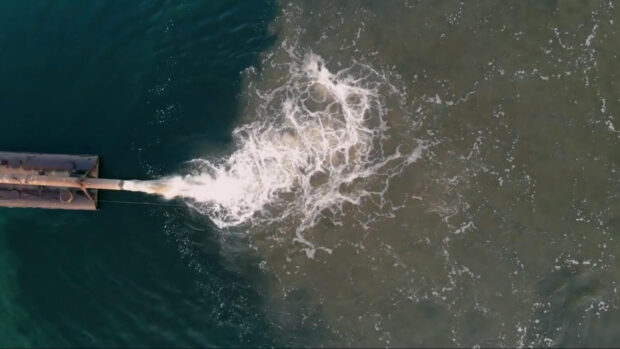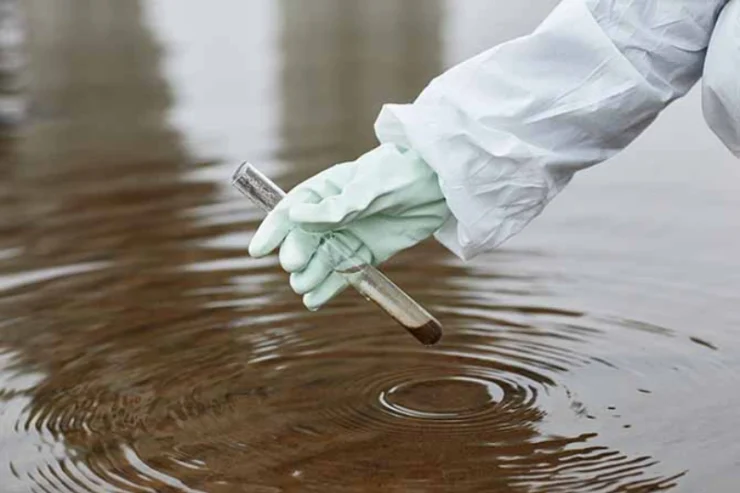For decades, military personnel and their families stationed at Camp Lejeune, a United States Marine Corps base in North Carolina, unknowingly drank and bathed in water contaminated with toxic chemicals.
The contamination, which began in the 1950s and continued for years, has had a devastating impact on the health and well-being of thousands of people, with many developing various forms of cancer and other serious health problems.
In this article, we will explore the tragic story of the Camp Lejeune water contamination, its devastating impact on the lives of military personnel and their families, and the lessons that can be learned from this environmental disaster.
We will also examine the diseases caused as a result of the Camp Lejeune water contamination, the efforts made to provide support and compensation to those affected, and the steps that can be taken to prevent similar incidents from occurring in the future.
Let’s get started!
The Toxic Chemicals Found in Camp Lejeune’s Water Supply

The contamination of Camp Lejeune’s water supply was caused by various toxic chemicals, including trichloroethylene (TCE), tetrachloroethylene (PCE), benzene, and vinyl chloride. These chemicals are known to be hazardous to human health and have been linked to a range of serious illnesses, including cancer.
Trichloroethylene (TCE) is a volatile organic compound commonly used as a degreaser in industrial processes. It has been linked to kidney cancer, liver cancer, and lymphoma, among other health problems. Studies have shown that exposure to TCE can also increase the risk of developmental and reproductive disorders such as congenital heart defects, extremely low birth weight, spontaneous abortion, CNS defects, etc.
Tetrachloroethylene (PCE), another industrial solvent, has been linked to bladder cancer, leukemia, and lymphoma. It is also known to cause liver and kidney damage, as well as neurological problems.
Benzene, a chemical used in the production of plastics, synthetic fibers, and rubber, is a known carcinogen. It has been linked to leukemia, lymphoma, and other blood-related disorders. Exposure to vinyl chloride has also been found to cause similar problems.
The Devastating Impact of Camp Lejeune’s Toxic Water on Health
Cancer is one of the most significant health risks associated with Camp Lejeune water contamination. According to a study, the incidence of certain cancers, including breast cancer and bladder cancer, was higher among people who lived or worked at Camp Lejeune during the contaminated period compared to the general population.
Additionally, they also had a higher risk of dying from cancers of the esophagus, prostate, and kidney compared to Marines who served at other bases during the same time period.
Reproductive and Neurological disorders are also major concerns for those exposed to Camp Lejeune’s toxic water. Symptoms of Camp Lejeune Water Contamination can vary depending on the individual and the length and intensity of their exposure. Some common symptoms of exposure to toxic chemicals found in the water include skin rashes, respiratory problems, nausea and vomiting, and liver and kidney damage.
The Fight for Compensation and Accountability

The fight for compensation and accountability for the victims of the Camp Lejeune water contamination crisis has been ongoing for decades. Congress enacted the “Honoring America’s Veterans and Caring for Camp Lejeune Families Act” in 2012, which offered healthcare to people affected by the tainted water. However, many victims continued to struggle for compensation for the damages they had suffered.
In 2022, the Camp Lejeune Justice Act was passed, which allows individuals to file lawsuits to recover their damages. This is a significant step towards justice for those affected by the toxic water at Camp Lejeune.
If the Camp Lejeune water contamination has impacted you or a loved one, you may want a dedicated and experienced team of lawyers to represent you. TorHoerman Law is a reputed law that you may consider contacting to help you get the compensation you deserve.
It is a nationally recognized law firm that has been representing clients in toxic exposure cases for over a decade. Their experienced attorneys have a proven track record of success and are dedicated to fighting for the rights of those impacted by environmental disasters like Camp Lejeune.
Additionally, at TorHoerman Law, clients are the top priority. The firm’s attorneys understand the challenges and difficulties that their clients are facing and are committed to providing personalized attention and support throughout the legal process.
Lessons Learned and Future Implications: The Need for Stronger Environmental Regulations and Safeguards

The lessons learned from the Camp Lejeune water contamination crisis highlight the importance of proactive environmental regulation and safeguards to prevent future disasters.
This includes stronger enforcement of existing laws, increased funding for environmental monitoring and research, and the implementation of new regulations to protect public health and the environment.
According to the Environmental Protection Agency (EPA), there are over 1300 highly contaminated superfund sites on the national priority list across the United States that require cleanup. In addition, a study by the Natural Resources Defense Council found that nearly one in four Americans get their drinking water from systems that violate health standards.
While progress has been made in recent years, much more needs to be done to protect our water resources and ensure that communities across the country have access to safe and clean drinking water.
One way to address this issue is to invest in new technologies that can help detect and mitigate contamination more quickly and effectively. For example, smart sensors can be deployed in water systems to provide real-time monitoring and alert authorities when contaminants are detected. This can help prevent widespread exposure and enable faster response times.
Another approach is to implement stronger enforcement measures to hold polluters accountable for the harm they cause. This can include increased fines and penalties for violations of environmental laws, as well as more rigorous inspections and monitoring of industrial sites and other potential sources of contamination.
In addition, it is crucial to increase public awareness and education about environmental issues and the impact of contamination on our health and well-being. This can help build support for stronger regulations and safeguards, as well as empower individuals and communities to take action to protect themselves and their environment.
Conclusion
The legacy of the Camp Lejeune water contamination crisis serves as a powerful reminder of the need for continued vigilance and action to protect our environment and our health. By working together, we can help ensure that our communities are safe, healthy, and sustainable for generations to come.




























